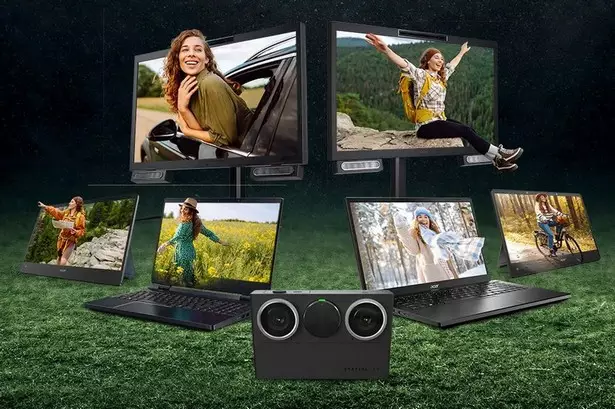Acer SpatialLabs Eyes Stereo Camera is designed for content creating and 3D video calls
05.06.24
Acer has announced a new stereo camera, SpatialLabs Eyes Stereo Camera, designed for creating 3D photos and videos. This compact camera (102 x 66 x 23 mm) is suitable for both recording 3D content and live 3D broadcasts on platforms such as YouTube, as well as 3D video calls via Teams, Zoom and Google Meet.
SpatialLabs Eyes Stereo Camera is equipped with two lenses with a resolution of 8 Mpix each and has a built-in mirror for selfies. The camera is equipped with electronic image stabilization (EIS), automatic and touch focus. For experienced photographers, manual settings such as changing ISO, white balance and shutter speed are provided.
Live 3D streaming will be available in version 3.0 of the Acer SpatialLabs Player, and high-quality 3D video conferencing will be possible through the SpatialLabs video calling widget.
This camera is compatible with the SpatialLabs range of devices from Acer, including notebooks with 3D screens without the need for glasses. 3D content shot with this camera can also be viewed on AR or VR headsets, as well as third-party 3D projectors.
The Acer SpatialLabs Eyes Stereo Camera will go on sale in the third quarter of 2024 starting at $549 in the US and €549 in Europe.
Don't miss interesting news
Subscribe to our channels and read announcements of high-tech news, tes
Logitech G Powerplay 2 wireless charging pad review

Logitech has great wireless mice, and there’s also the G Powerplay 2 wireless charging mat that will keep them charged right while you’re using them.
The Ploopy Classic 2 trackball mouse with a 3D-printed body costs $145 3D mouse printer
Canadian company Ploopy, which specializes in the development of open-source accessories, has introduced the Classic 2 – an updated version of the trackball.
Apple and SpaceX are actively competing for satellite communications services Apple Elon Musk
Apple and SpaceX are in a race to become the leader in satellite communications for mobile devices. Both companies are aiming to eliminate cellular blackouts using satellite technology.


